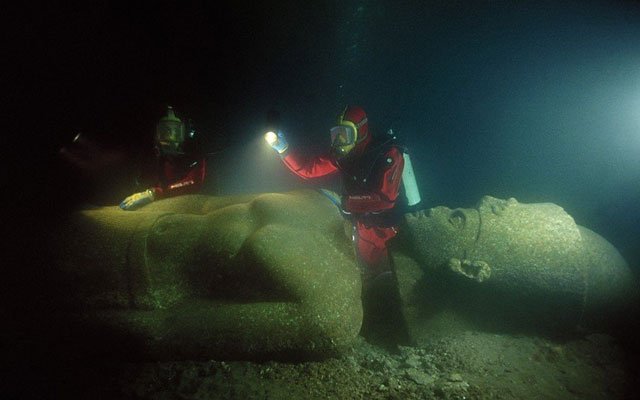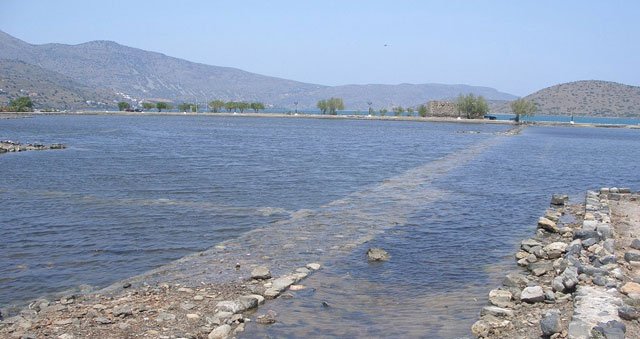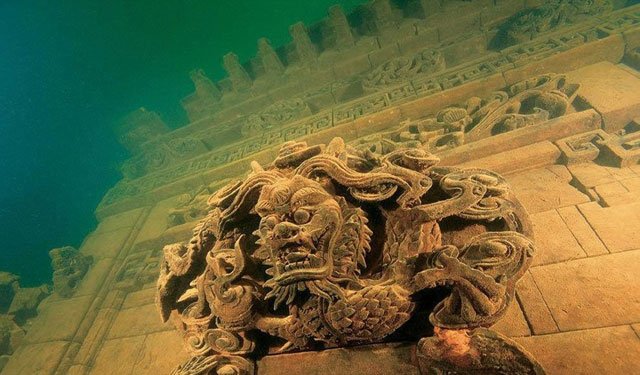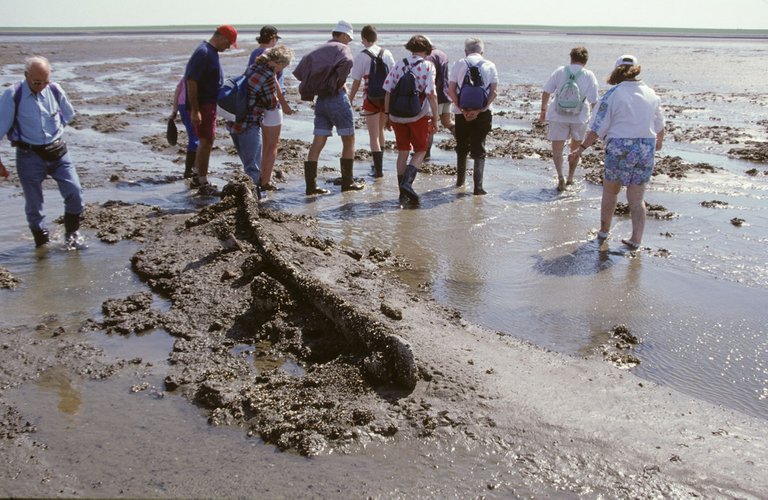From the seaside shrine in India, to the middle of the sea in Bali, to the bronze statue that lined the bottom of the Bay of Naples, the vast waters of the earth are indeed filled with the remains of ancient civilizations, where there is also an ancient legend about the underwater city named Atlantis. The ruins of the sea that have ever been found can be a reminder to all of us, that as great as any city - even the kingdom, will not be able to resist the enormity of the marvelous and merciless sea power. Here is a bottom water town that rarely knows its story :
1.Eidum
The Wadden Sea is a vast ocean region that stretches along the northwestern border of Germany. In the sea of Wadden, there are several small islands called the North Frisian islands, where these islands are slowly eroded by the waves that hit the German coast. This island also seems to be getting smaller every day, and at least one of these islands that was once about 300 meters wider than the present size. It is known because a few hundred meters from the coastline currently there is an underwater settlement named Eidum.

It is believed that Eidum has been built since the 1300s, and then built again, again and again. Due to their location, Eidum has a tendency to bear the erosion of the waves from the North Sea, which can periodically destroy the city. In 1436, massive floods destroyed Eidum, killing 180 people and forcing coastal populations to move to higher ground. There they established a new settlement that became Westerland. According to the official German website, from the 1800s, the remains of Eidum can still be seen hundreds of years later when the waters recede.
2.Olous
Crete is an island off the coast of Greece in the Mediterranean Sea. Due to sea erosion (and more than one earthquake), parts of the island slowly enter the sea, and now the island of Crete has become a favorite tourist destination to see the ruins of cities and buildings that have been submerged in the sea. One of the submerged islands of Crete is Olous, where Olous was once a thriving city with a population of nearly 40,000. And at that time Olous also seemed "aligned" with other Greek cities in terms of industry, commerce, and architecture. But Olous has one very tragic shortcoming, the city is built on a sandy coastline, not chalky like most other cities on the island of Crete. Recently, the rest of the ruins of Olous became easy to access by Scuba and Snorkel divers in Poros Bay and became an exciting tourist destination.

3.Dian Kingdom
In 2001 at Fuxian Lake, China, a team of archaeologists discovered the ruins of a vast building at the bottom of the lake. Locals often claim that they often see ghost towns under the waters of this lake, and finally over the years, this story becomes a local legend. In subsequent dives, archaeologists discover standing walls, streets made with tile stones, and debris from all over the city spread over a 6.5 square kilometer span of land. After analyzing the carbon contained in some clay pots, it is determined that these ruins have existed since 1750 years ago. And it is believed also that the whole city has experienced a great lurch, then entered and sank into the lake.

4.Bay of Mulifanua
Mulifanua is a small village located on the northern tip of Upolu island, Samoa. The island is commonly used as a temporary port of ferry boats that will go to Savai'i island. As they were about to expand the Ferry line in the 70s, workers found thousands of pottery shards that filled the seabed. An investigation followed by archaeologists suggests that the pottery fragments are remnants from the Lapita village, which was perhaps one of the largest villages in the region. Lapita is an ancient culture, believed to have spread to people today who live in Micronesia and Polynesia. The village found in the bay of Mulifanua is one of the most advanced Lapita settlements known. It is also the oldest known village, where the fragments of pottery studied are believed to date from 800 BC.

5.Rungholt
Sometimes, a city on an island will slowly be "pulled" into the sea by tidal erosion. And at other times, the whole island will go into the sea without leaving any trace. That's how it happened with Strand island, located in the North Sea, swallowed by a storm surge in the early 1600's. Since this island has no trace anymore, it is rather difficult to find the only city on the island, the city of Rungholt.

In 1362, the North Sea experienced a giant Atlantic storm surge that hit the coast of England, Germany and the Netherlands. With an estimated death toll of 25,000 people, where this storm also swept the town of Rungholt from the map! After 700 years passed, divers discovered the relics of Rungholt on the seafloor, but the city itself has never been found.
Reference :
https://www.earthporm.com/5-mind-blowing-underwater-cities/
https://www.urbanghostsmedia.com/2015/01/10-lost-underwater-cities-ancient-world-sunken-civilisations/
https://www.journals.uair.arizona.edu/index.php/radiocarbon/index
https://steemit.com/indonesia/@aqsal/imported-rice-anda-harvest-soon-arrived